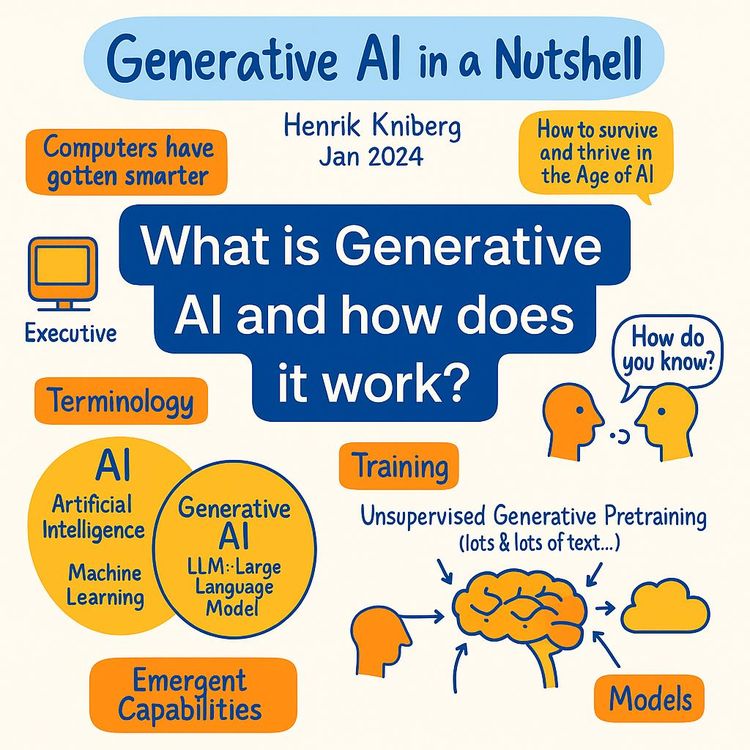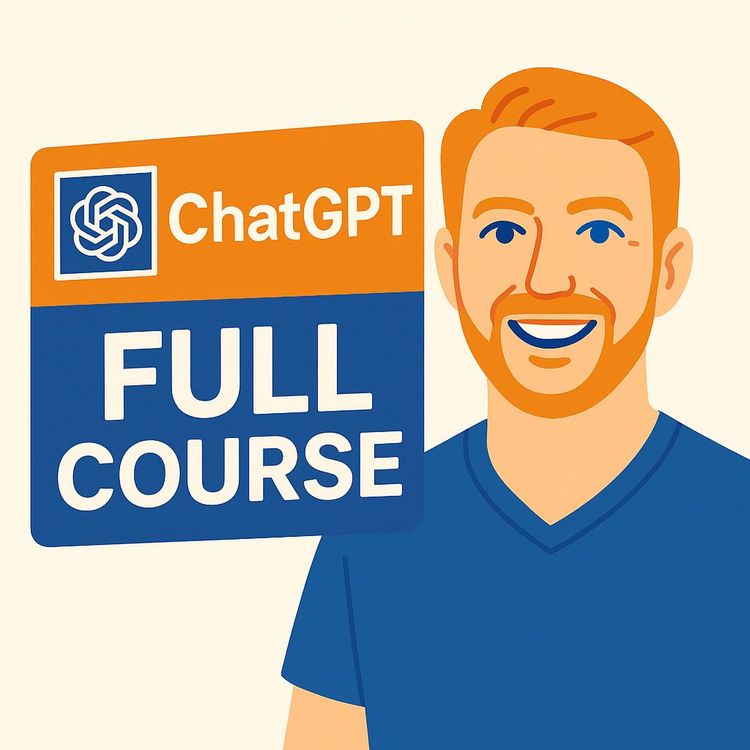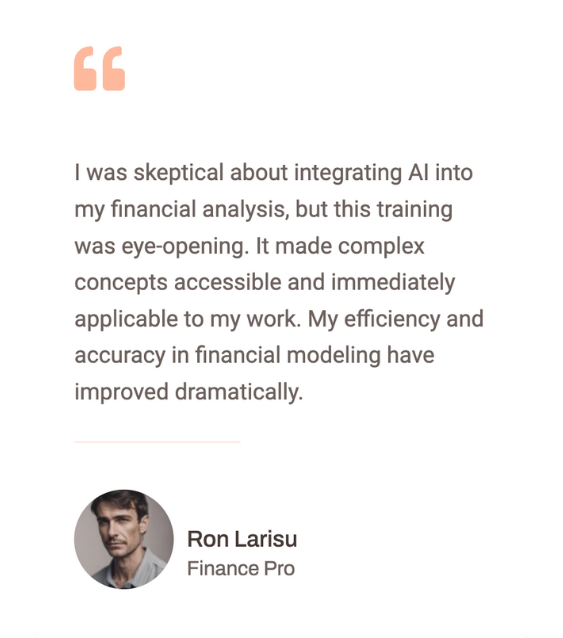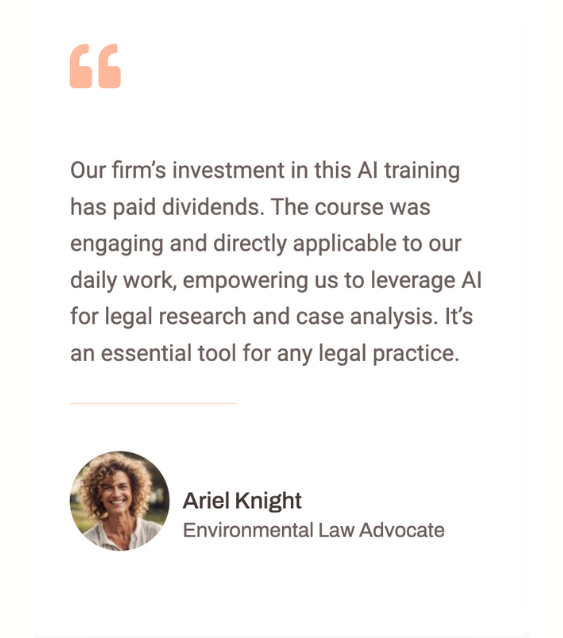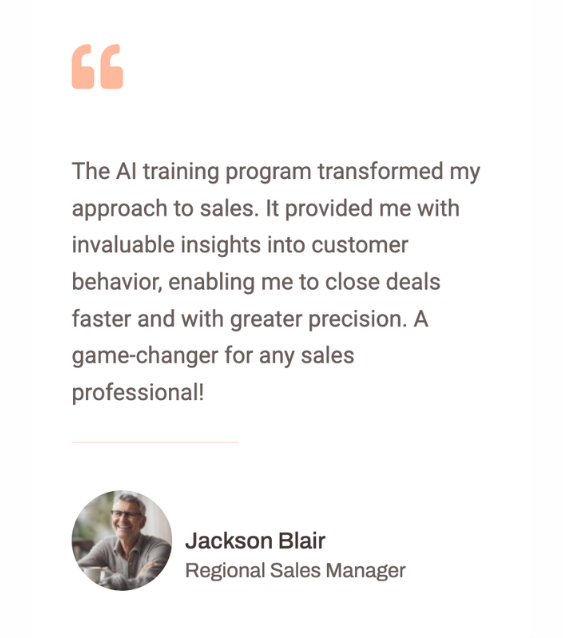Build Your First Voice AI Agent with Vapi & n8n: Beginner's Guide (Video Course)
Build a real voice AI agent from scratch with Vapi and n8n. Learn the core stack, wire up Google Calendar bookings, feed it a knowledge base, and auto-log calls to Sheets,then iterate fast with hands-on testing. No heavy coding required.
Related Certification: Certification in Building and Deploying Voice AI Agents with Vapi & n8n

Also includes Access to All:
What You Will Learn
- Build and deploy a Vapi voice AI agent (STT → LLM → TTS)
- Craft and tune system prompts to define identity, tone, and process
- Load knowledge via uploaded files (no vector DB) for accurate answers
- Integrate Google Calendar tools to check availability and book events
- Connect Vapi to n8n webhooks to automate post-call workflows (Sheets, email, CRM)
- Test, debug, and iterate using transcripts, structured data, and prompt refinements
Study Guide
Build Your First Voice AI Agent with n8n & Vapi (Full Beginner's Guide)
Imagine your business answering every call instantly. Not with a clunky IVR, but with a natural voice that listens, understands, and gets things done. No hold music. No forms. Just a conversation that ends with an appointment booked, a refund initiated, or a customer completely taken care of.
This course shows you exactly how to build that,step by step,from zero. You'll create a voice AI agent in Vapi, give it a personality with a system prompt, feed it knowledge with your documents, equip it with tools like Google Calendar for bookings, and wire up post-call automation with n8n to log data, send notifications, and keep your operations tight.
By the end, you'll have a working voice agent that can answer questions, schedule appointments, and trigger your downstream processes automatically. More importantly, you'll understand the principles that let you build agents for support, sales, and operations in any niche.
What You'll Learn and Why It Matters
You'll master the core loop of voice AI: speech-to-text, language reasoning, and text-to-speech. You'll learn why the system prompt is your agent's rulebook, how to add knowledge without a heavy database setup, and how to extend capabilities with tools and automations. That means you can automate repetitive calls, qualify leads, book meetings, and send useful data where it needs to go,without extra headcount or friction for the customer.
This guide is written for builders and business operators. If you can follow instructions and run a test call, you can ship a working agent. If you're more technical, there's room to customize, optimize, and scale.
Core Concepts, In Plain English
Voice AI Agent
A virtual assistant that talks like a person, understands intent, and can perform actions,on the phone or through a website widget.
Vapi
A platform to build, manage, and deploy voice agents. Think of it as your real-time voice stack and conversation engine.
n8n
A visual automation tool. It connects your agent to spreadsheets, CRMs, email, and any API so calls turn into completed workflows.
Speech-to-Text (STT)
Converts user speech into text the AI can understand.
Large Language Model (LLM)
The brain that interprets text, reasons about it, and decides what to do next.
Text-to-Speech (TTS)
Converts the AI's text response back into natural-sounding audio.
System Prompt
Your agent's instruction manual: identity, tone, rules, process, and boundaries.
Tools
APIs the agent can call to take action,check a calendar, book an appointment, look up a customer, log a ticket.
Webhook
A URL that listens for a POST from Vapi, which n8n can use to trigger workflows after a call ends.
The Architecture of a Voice AI Agent
Here's the real-time loop that makes voice work:
1) The user speaks.
2) STT turns speech into text.
3) The LLM interprets, reasons, and decides what to say or what tool to use.
4) TTS converts the response to audio.
5) The agent speaks, then listens again,fast enough that it feels like a real conversation.
Latency matters. The faster the turnaround, the more natural the call feels. That's why platforms like Vapi handle streaming audio, barge-in (interrupting to answer quickly), and prompt routing under the hood. Your job is to pick the right model, craft a great prompt, and expose the right tools.
Example use case 1
A warranty hotline that listens to a customer's issue, checks warranty details in a doc, and explains coverage,clearly and consistently,every time.
Example use case 2
A service business that qualifies leads, suggests time slots, and books a confirmed appointment, then sends a confirmation email automatically.
The Four Pillars of an Effective Voice Agent
1) Large Language Model (LLM)
This is your agent's intelligence. Models from OpenAI, Anthropic, and Google work well. You'll trade off speed, cost, and conversational quality. Faster models reduce dead air. More capable models handle ambiguity better and follow complex prompts more reliably.
Examples
- A lightweight model for quick FAQ and routing on high-volume calls.
- A stronger model for nuanced conversations like troubleshooting or sales discovery.
2) System Prompt
This is the most important part,period. You define identity, tone, what to do, what not to do, the exact booking process, when to escalate, and how to use tools.
Examples
- "You are Alex, an empathetic customer support specialist. Always apologize for inconvenience once, then move to solutions. If policy is unclear, check files before responding."
- "You are a booking agent for Hercules Detailing. Follow the exact process: collect service type → preferred date/time → check availability → confirm → get name and email → create event → read back details."
3) Voice Model
The audible persona. Choose a voice that fits your brand and audience,gender, accent, tone, and energy. You can use voices from 11Labs, Deepgram, or OpenAI through Vapi.
Examples
- Calm, warm voice for healthcare appointment lines.
- Upbeat, energetic voice for a retail sales campaign.
4) Tools
APIs that let your agent act in the world. Calendar, CRM, ticketing, database queries,this is where conversations become outcomes.
Examples
- Google Calendar tools for availability and booking.
- A "lookup_customer" tool that retrieves past orders from your database via n8n.
Types of Voice Agents (and When to Use Each)
Inbound agents
They answer calls. Perfect for customer support, order management, and scheduling when customers reach out to you.
Example
- A support line that answers shipping and returns questions using your policies document.
Example
- A clinic line that triages calls, offers appointment windows, and books slots.
Outbound agents
They initiate calls. Great for sales outreach, reminders, and feedback collection.
Example
- A reactivation campaign calling past leads with a special offer.
Example
- Automated appointment reminders that confirm or reschedule via voice.
Website widget agents
Voice on your website. A user clicks a button and speaks through their browser. Faster than forms, more personal than chat.
Example
- A product page guide that answers questions and books demos.
Example
- A help center voice guide that resolves issues using your docs.
Quick Setup: Orientation in Vapi
Inside Vapi, you'll create an Assistant (your agent), choose a model and voice, craft the system prompt, add files for knowledge, and optionally attach tools. You can test calls directly from the dashboard and see transcripts, tool calls, and timing to iterate fast.
Tips
- Start with a template (Customer Support, Sales, or Blank) and customize it.
- Keep your first version simple: one goal, one process, one tool. Expand after you get the basics working.
Build a Knowledge-Based Support Agent (Step-by-Step)
We'll build "Alex," a support agent for the fictional company Green Grass. Alex will answer questions using your actual policies and FAQs.
Step 1: Create the assistant
- Go to the Vapi dashboard → Create Assistant.
- Choose the Customer Support Specialist template and name it "Alex."
- Keep the default model and voice for now; we'll refine later.
Step 2: Provide a knowledge base (no vector DB needed)
- In the dashboard, go to More → Files.
- Upload your policy/FAQ PDF or text file.
- Back in Alex's configuration, open Model → Files and link your uploaded doc.
- Publish. Alex can now reference your document when answering questions.
Step 3: Tune the system prompt
- Replace placeholder company name with your real one (e.g., "Green Grass").
- Add clear rules on tone, escalation, and when to consult files.
- Explicitly instruct Alex to cite or confirm from the knowledge file before answering policy questions.
Example system instruction
In your system prompt:
You are Alex, a calm and precise support specialist for Green Grass. When asked about policies, always check the linked files first. Speak concisely, give the exact answer, then offer help with anything else. If unsure, ask a clarifying question before responding. If information isn't in the file, say so and offer to escalate.
Step 4: Test and iterate
- Click Talk to assistant and ask: "What's the return policy?" "Do you offer bulk discounts?"
- Watch the transcription and note when Alex queries the file.
- Tighten the prompt if answers feel vague. Be explicit about the order of information and how to phrase policy details.
Two example refinements
- "When explaining returns, start with the eligibility window, then required condition, then how to initiate."
- "If the user sounds frustrated, acknowledge feelings, then move to action steps in one sentence."
Best practices
- Keep the doc clean: remove outdated policy duplicates, make headers clear.
- Split massive PDFs into topic-based files if you notice slow or off-target retrieval.
- Avoid ambiguous wording in policies; the model mirrors your clarity.
Build a Booking Agent with Tools (Google Calendar)
Now we'll build a booking agent for "Hercules Detailing." This one doesn't just answer questions,it schedules work on your actual calendar.
Step 1: Connect Google Calendar
- In Vapi, go to More → Integrations → Tool Providers and connect your Google account for Calendar.
Step 2: Create the tools
- Go to Tools → Create tool.
- Create check_availability using the Google Calendar "check availability" type. Add a description like: "Use this to find open time slots." Set your timezone.
- Create create_event using the Google Calendar "create event" type. Description: "Use this to book a confirmed appointment." Set timezone.
Step 3: Create the Booking Agent
- Create a new assistant using Blank and name it "Booking Agent."
- In Tools, attach check_availability and create_event.
- Set the First Message to something friendly and on-brand.
Example first message
First line the agent says:
Hey, this is Nate from Hercules Detailing. What kind of detailing do you need today?
Step 4: Engineer the system prompt
Your blank assistant needs precise instructions. Spell out the identity, goal, and a rigid process that references each tool.
Booking prompt outline
Identity:
You are a friendly and efficient booking assistant for Hercules Detailing.
Goal:
Help callers book car detailing appointments quickly and accurately.
Process (follow in order):
1) Ask what service they need (interior, exterior, full).
2) Ask for a preferred date and time window.
3) Use check_availability to find open slots.
4) Offer 2-3 options within their window; confirm one.
5) Collect name and email; read the email back letter-by-letter to confirm.
6) Use create_event to book the appointment with service type, time, name, and email in the description.
7) Read back the full details and ask if anything else is needed.
Tool usage rules:
- Always call check_availability before offering slots.
- Only call create_event after the user confirms a specific time and provides name and email.
Edge cases:
- If the customer's requested time is unavailable, offer the nearest earlier and later options.
- If the user is unsure about services, explain options briefly and ask one clarifying question.
Time awareness:
Use the current date/time for availability queries. Today's date/time is injected below. Only book future times.
Inject current date/time into the prompt
Agents aren't automatically aware of "now." Tell it what "now" is using a dynamic variable.
In Vapi, you can add:
Today's date and time is {{$moment.utc().tz('America/Chicago').format()}}
Alternative format (platform-dependent):
Today's date and time is {{time.now(format='YYYY-MM-DD HH:mm', timezone='America/Chicago')}}
Adjust timezone as needed. The exact syntax can vary; the point is to make "now" explicit.
Step 5: Test a real booking
- Simulate a call. Ask for a Friday morning appointment. Confirm the time. Provide a name and email. Make the agent read the email back to confirm spelling.
- Check your Google Calendar to confirm the event contains the service type, name, and email.
Two example improvements after testing
- If the agent offers slots outside business hours, add: "Only suggest times between 9-5 local time on weekdays."
- If the agent forgets to confirm emails, add: "Before creating the event, spell the email back and ask 'Did I get that right?'"
Troubleshooting Tool Use and Time Awareness
Symptom
The agent offers times that don't match your current calendar availability.
Likely cause
No current date/time context in the prompt. The model can't reason about "today," "tomorrow," or time windows reliably without it.
Fix
Add a dynamic "now" variable to your prompt using the examples above. Confirm your timezone and verify results after publishing changes.
Symptom
Double bookings or missed data in created events.
Likely causes
- Vague instructions in the prompt about when to call create_event.
- Missing confirmation step for name/email.
- Not storing details in the event description.
Fix
Be explicit: "Only call create_event after confirming a single time and verifying name/email. Put all details in the description."
Automating Post-Call Reporting with n8n
This is where your agent becomes an operational asset. After a call, Vapi can send a structured report to a webhook. n8n catches that payload, logs it, and triggers whatever needs to happen,updating a sheet, emailing your team, creating a CRM record, and more.
Step 1: Configure Analysis in Vapi
- In your assistant, open Analysis.
- Enable Summary to get a tight narrative of the call.
- Enable Structured Data and define exactly what to extract (e.g., appointment_type, customer_email, booking_time). Provide a brief instruction for the extractor and set properties you expect the LLM to fill.
Example structured data instruction
Prompt for extraction:
You will be given a call transcript. Extract the appointment type, customer email address, and appointment date/time. If any field is missing, return "NA."
Step 2: Create an n8n webhook workflow
- In n8n, create a new workflow with a Webhook node as the trigger.
- Set method to POST and copy the Production URL.
Step 3: Connect Vapi to your webhook
- In Vapi, open Advanced → Messaging.
- Paste your n8n webhook URL into Server URL.
- Enable only "End Of Call Report."
- Publish your assistant.
Step 4: Append to Google Sheets and send an email
- Activate your n8n workflow so it listens.
- Make a test call to generate a payload.
- Add a Google Sheets node: operation "Append Row," select the target sheet, and map fields from the webhook payload (e.g., summary, appointment_type, customer_email, booking_time).
- Add a Gmail (or Slack/Discord) node to send a summary to your team.
Two example automations beyond sheets
- Create a CRM contact and log a call record when a new email is captured.
- Trigger a follow-up email sequence or a reminder one day before the appointment.
Best practices
- Keep your structured data schema small and strict. Only extract what you'll use.
- Use consistent property names (snake_case is fine) to make mapping predictable.
- Add basic validation in n8n (e.g., email contains "@") to avoid junk data.
From Conversation to Action: Knowledge vs. Tools
Your agent can be informed, or it can be effective. The best ones are both.
Knowledge
- Provide documents (policies, FAQs, product specs) so the agent answers accurately.
- Simple setup: upload files and link them,no vector database needed for basic use cases.
Examples
- Returns, warranty, and shipping info in a single doc for a support agent.
- Service descriptions, pricing ranges, and preparation steps for a home services agent.
Tools
- Let the agent act: check calendars, book events, update CRMs, retrieve order status.
- You'll write tool descriptions the LLM can "read" to know when and how to use them.
Examples
- "check_availability" and "create_event" for scheduling.
- "lookup_order" via n8n to a warehouse system: returns status and ETA.
LLM Selection: Speed, Quality, Cost
Choose a model that matches your use case. On voice, latency is felt. A slightly less capable model that's fast can outperform a slow genius because your callers won't wait. On the other hand, complex support or sales discovery may need deeper reasoning.
Two practical strategies
- Start with a mid-tier model and optimize your prompt. Poor prompts waste expensive models.
- If calls vary, route: use a fast model for simple intents and escalate to a stronger model for complex flows.
Prompt Engineering That Actually Works
Treat the system prompt like a playbook. The agent follows what you write, literally. Be clear, be concrete, and include process steps and non-negotiables.
What to include
- Identity, tone, and goals.
- Step-by-step process for common tasks.
- Exact tool usage criteria and parameters to include in tool calls.
- Confirmation steps for critical data (names, emails, amounts, dates).
- What to do if information is missing or unclear (ask one focused question).
- Boundaries: what the agent must not do.
Two example clauses to steal
- "If you don't have enough information to answer, ask a single clarifying question instead of guessing."
- "Before ending the call, summarize what was done and ask if the caller needs anything else."
Debugging and Iteration: The Real Work
Building an effective voice agent is iterative. You will test, fail, tighten, and retest. That's normal.
A simple loop
- Prompt → Test a call → Read the transcript → Identify misses → Adjust prompt/tool descriptions → Test again.
Targets to watch
- Response delay: trim verbosity if the agent monologues.
- Tool accuracy: confirm parameters passed into tools match user intent.
- Hallucinations: add "Only answer using the linked files. If the answer isn't in the files, say you don't know and offer to escalate."
Example diagnostics
- If the agent misses a policy detail, add a line: "When answering policy questions, cite the exact clause or quote it paraphrased."
- If the agent tries to book without confirmation, add: "Do not call create_event until the user explicitly confirms a time and you have read back and confirmed the email."
Practical Use Cases to Spark Ideas
Support
- Order status, returns, shipping exceptions, warranty coverage.
- Post-call: create a ticket in your helpdesk via n8n and email a summary to the customer.
Sales
- Outbound lead qualification with a short discovery script and a calendar booking step.
- Post-call: push notes and call score to your CRM, assign to rep.
Operations
- Service scheduling for contractors with phone-based intake and auto-booking.
- Post-call: send a checklist to the customer and task the technician in your PM tool.
Security, Privacy, and Consent (Keep It Simple and Safe)
- Collect only what you need (name, email, appointment time).
- Avoid reading sensitive data aloud unless necessary; confirm via email when possible.
- For outbound calls, ensure you have consent and a clear opt-out path if your use case requires it.
- In n8n, store API keys and service credentials in environment variables or secure credentials, not in plain text.
Going Deeper with n8n: Custom Tools via Webhooks
Vapi tools can call providers like Google Calendar natively. For anything custom, build a tool that hits your own n8n webhook. n8n does the heavy lifting, calls any API you want, and returns a clean result for the agent to speak back.
Pattern
- Create an HTTP endpoint in n8n with a Webhook node.
- Do the work with other nodes (CRM, payment, database).
- Respond with a small JSON object the agent can read (status, message, key fields).
Two custom tool examples
- "lookup_customer_profile": input email → n8n queries CRM → returns plan level, last order date, and any open tickets.
- "process_refund": input order_id and amount → n8n calls payment API → returns approval code and status message.
Tool description best practices
- Describe exactly when to use it and which fields are required.
- Include examples in the tool description if the platform supports it.
- Keep outputs minimal and predictable so your agent can summarize naturally.
Instrumenting Post-Call Data (What to Capture)
- Summary: one or two sentences that make sense to a human.
- Structured data: fields like appointment_type, customer_email, booking_time, intent, sentiment (if useful).
- Metadata: call duration, model used, tool calls used,handy for analytics and iteration.
Two logging examples
- A Google Sheet with columns for date, caller number, summary, appointment_type, booking_time, customer_email.
- A CRM custom object "AI Call" linked to contact records, with summary and next steps.
Examples You Can Copy-Paste (Adapt to Your Brand)
Knowledge agent policy clause
When asked about the return policy, give the exact window first, then the acceptable condition of items, then the steps to initiate a return. Keep it under three sentences unless the user asks for more detail.
Booking agent confirmation script
Let me confirm: You're booking a full detailing on Tuesday at 10:00 AM for Jordan, and your email is j.o.r.d.a.n@example.com. Is that correct?
Common Pitfalls (And How to Avoid Them)
Overly broad prompts
- Symptom: rambling, inconsistent behavior.
- Fix: add explicit steps, constraints, and tool usage rules.
Missing time context
- Symptom: wrong availability suggestions.
- Fix: inject current date/time with a dynamic variable in the prompt.
Messy knowledge files
- Symptom: off-target answers or contradictions.
- Fix: clean the doc, remove duplicates, use clear headings.
Silent failures in automations
- Symptom: no rows in Sheets, no email alerts.
- Fix: verify n8n webhook is in production mode, confirm Vapi messaging is set to End Of Call Report only, and inspect webhook payload structure.
Performance Tuning for Real Conversations
- Keep the agent concise. Long monologues increase hang-ups.
- Use active confirmations: repeat back key info in one sentence.
- Prefer offering two to three options instead of open-ended questions to reduce decision fatigue.
- If latency spikes, reduce verbosity and simplify tool responses.
Implications and Applications
For businesses
Automate repetitive calls,support questions, scheduling, lead capture,so your team handles the edge cases, not the routine. You get consistent responses, instant service, and lower cost per interaction.
For developers and automation specialists
This is the next level of building: real-time AI that takes action. You'll merge prompts, APIs, and workflow design to produce outcomes, not just conversations.
For end-users
They get the fastest route to a result,no menus, no forms, no waiting. Ask, get helped, move on.
Pilot Projects and Paths
Beginner path
- Build a knowledge-based agent with one PDF and a clean prompt. Test it until the answers are crisp.
- Add one tool (Calendar check) and get it working end-to-end.
Pilot project for ROI
- Pick a high-volume, simple workflow: answer FAQs and schedule consults. Measure reduced hold times and increased bookings.
Advanced development
- Add n8n-powered tools for CRM updates, order lookups, and refunds.
- Design multi-step automations triggered by the End Of Call Report.
Focus on prompt engineering
- Review call transcripts weekly, identify patterns, and refine instructions. Small changes compound into big improvements.
Full Walkthrough Recap (Do This First to Last)
1) Understand the loop: STT → LLM → TTS, and why latency matters.
2) Choose your model, write a clear system prompt, pick a voice.
3) Build a knowledge-based support agent by uploading files and linking them.
4) Test and tighten your prompt based on real transcripts.
5) Build a booking agent: create check_availability and create_event tools, write a strict process, and inject current time.
6) Wire up n8n: webhook trigger → Google Sheets (Append Row) → Gmail alert.
7) Iterate relentlessly: fix misses, refine rules, expand tools as needed.
Detailed Example: Knowledge to Action
Scenario 1: Returns question
- Caller: "Can I return a product if the packaging is open?"
- Agent: Checks the policy file, gives a precise answer with conditions, offers to email the steps.
- Post-call: n8n logs the interaction and triggers a follow-up email template with instructions.
Scenario 2: Booking with a constraint
- Caller: "I need an exterior detailing this weekend."
- Agent: Confirms service → uses check_availability → offers the nearest Saturday slot → confirms email → calls create_event → reads back details.
- Post-call: n8n sends an internal Slack message with the booking summary to the technician channel.
Advanced Tips You'll Wish You Knew Sooner
- Put the most critical rules near the top of the system prompt; models give early lines more weight.
- Use simple language and short sentences. The model follows specificity, not poetry.
- When adding tools, include "when to use" and "when not to use" clauses in their descriptions.
- To reduce errors, include gentle redundancy: "Confirm email spelling" and "Read back email" both, not just one.
- Add a final check step: "Before ending, summarize what happened and confirm the user is satisfied."
Key Insights You Should Internalize
Truth 1
Voice agents are an LLM plus voice I/O. The intelligence comes from the model and your prompt. The magic comes from tools.
Truth 2
The system prompt is the playbook. The better the playbook, the better the agent.
Truth 3
Knowledge makes answers accurate; tools make conversations productive.
Truth 4
Give your agent real-time context (like the current date/time) for anything time-sensitive.
Truth 5
Connecting Vapi to n8n turns calls into automated workflows with zero manual effort.
Truth 6
Model choice affects latency, cost, and quality. Test and iterate to find the right balance.
Practice and Reflection
Multiple Choice
1) Which three components form the core conversational loop?
A) System Prompt, LLM, Tools
B) Speech-to-Text, LLM, Text-to-Speech
C) Webhook, n8n, Google Sheets
D) Inbound, Outbound, Website Widget
2) What's the primary function of the system prompt in a Vapi agent?
A) Convert text to audio
B) Define identity, personality, and operational rules
C) Connect to external tools
D) Transcribe speech
3) To automate post-call logging from Vapi, send the End Of Call Report to which n8n node?
A) Gmail
B) Google Sheets
C) Webhook
D) Function
Short Answer
1) Explain the difference between inbound and outbound agents and provide one use case for each.
2) Describe the steps to provide a Vapi agent with a knowledge base using a PDF.
3) Why is it important to include a current date function in the prompt of a booking agent?
Discussion
1) Your booking agent offered a slot that was already booked. What likely caused this, and how would you troubleshoot?
2) For an e-commerce voice agent, what two tools could you add beyond FAQs, and how would you describe their purpose in the system prompt?
3) Outline a repeatable process for testing a new support agent, documenting failures, and improving the prompt.
Additional Resources Worth Exploring
- Vapi documentation for deeper features, voices, and tool setup.
- n8n documentation for building robust, multi-step workflows.
- Prompt engineering guides to sharpen your system prompt craftsmanship.
- For scale: look into vector databases when you outgrow simple file uploads for knowledge retrieval.
Comprehensive Checklist Before You Go Live
- The system prompt states identity, tone, and step-by-step process.
- Files are uploaded, linked, and cleaned of duplicates.
- Tools have clear descriptions, required inputs, and output expectations.
- The prompt includes a current date/time variable if time matters.
- You've run multiple test calls covering edge cases (no availability, misspelled emails, last-minute bookings).
- n8n webhook is in production mode, and a test call successfully appended to Google Sheets and sent an alert.
- You've documented failure modes and added guardrails in the prompt.
Two Complete Worked Examples (End-to-End)
Example 1: Knowledge Support Agent for Green Grass
Goal: Accurately answer questions about returns and shipping.
Setup: Create Assistant from Customer Support template → Upload "Green_Grass_Policy.pdf" → Link file in Model → Customize system prompt to always consult the file first → Test Q&A on returns and exchanges → Refine tone for empathy and brevity.
Automation: In Analysis, extract "policy_topic" and "resolution_status." Send End Of Call Report to n8n → Append to Google Sheets → Email a summary to support@yourcompany.com for review.
Outcome: Consistent answers, zero hold time, easy transcript review for continuous improvement.
Example 2: Booking Agent for Hercules Detailing
Goal: Book detailing appointments in Google Calendar.
Setup: Connect Google Calendar → Create check_availability and create_event tools → Build a Blank assistant → Write a strict step-by-step prompt → Inject current date/time → Require reading back email for confirmation → Test booking flow → Confirm calendar events are correct.
Automation: End Of Call Report to n8n → Append appointment_type, booking_time, and customer_email to "Bookings" sheet → Slack notification to operations channel with key info.
Outcome: Bookings made automatically, no back-and-forth, clear internal visibility.
Why This Skill Set Moves the Needle
You're not just building a bot. You're shipping a system that answers, thinks, acts, and reports back. Customers get speed. Teams get clean data. You get predictable outcomes from every call without scaling headcount linearly. And because you'll understand the mechanics,prompting, tools, automations,you can adapt the same blueprint to support, sales, operations, or any process that used to require a human on the line.
Conclusion: Turn This Into a Working Agent
Here's the short version: voice agents are LLMs with ears and a mouth. The system prompt is the rulebook. Knowledge files make answers accurate. Tools turn answers into actions. n8n makes every call produce a tangible result,logged, emailed, scheduled, or synced to your systems.
If you do nothing else, build the simple knowledge agent first, then bolt on a single tool for scheduling, and finally wire up the End Of Call Report to n8n. That sequence will give you the deepest understanding with the least complexity. From there, you can expand into CRM updates, order lookups, outbound campaigns, and more.
Your next step is simple: open Vapi, create your assistant, write the prompt, upload the file, make the first call, and iterate. Real progress in this space comes from shipping and sharpening. Get the first version live, then keep improving it until your agent feels inevitable.
Frequently Asked Questions
This FAQ exists to remove confusion and shorten your learning curve. It answers practical questions about building, launching, and scaling a voice AI agent using Vapi for live conversation and n8n for automation,covering basics, configuration, tools, testing, analytics, compliance, and growth tactics. Each answer includes clear actions and real examples so you can implement with confidence.
Section 1: Fundamentals of Voice AI Agents
What is a voice AI agent?
Quick answer:
A voice AI agent is a virtual assistant that talks and listens in real time over phone or web, powered by speech recognition, a language model, and text-to-speech. It can handle tasks like support, booking, and outreach,without putting people on hold.
Why it matters:
It brings self-serve capabilities to phone lines and sites, reducing wait times and freeing your team to handle high-value cases. For example, a detailing shop can let callers book appointments instantly, while a clinic can route patients and capture intake info before a nurse joins. Compared to text bots, voice agents manage interruptions, clarify details (like spelling an email), and feel more natural. The best results come from pairing conversation (Vapi) with actions (n8n), so calls don't end at "I'll email you",they trigger real updates in your tools.
What are the core components of a voice AI agent?
The 3 building blocks:
1) Speech-to-Text (STT) transcribes audio to text. 2) A Large Language Model (LLM) interprets intent and produces a reply. 3) Text-to-Speech (TTS) turns the reply back into natural audio. This loop runs continuously for a smooth call experience.
What this enables:
With STT, the agent "hears" you; with the LLM, it decides what to do; with TTS, it "speaks." In practice, this means the agent can clarify details ("Did you mean Tuesday morning?"), confirm bookings, and escalate when needed. If you add tools (like calendar or CRM), the same loop becomes transactional: it doesn't just answer,it acts. Keep latency low by choosing efficient models and concise prompts.
What are the main elements required to build a functional voice agent?
The 4 elements to configure:
1) LLM: Choose a model that balances speed, quality, and cost. 2) System Prompt: The agent's playbook,identity, rules, tone, and tool usage. 3) Voice: Select a voice that fits your brand and audience. 4) Tools: Connect to calendars, CRMs, or APIs for real actions.
Example:
A home services agent might use GPT-4o for reasoning, a friendly professional voice, a prompt that prioritizes clarity over small talk, and tools for checking availability and creating bookings. Add a fallback rule: "If unsure, ask one clarifying question, then escalate." This structure makes the difference between a chatty bot and a reliable assistant.
What are Vapi and n8n, and how do they work together?
Clear roles:
Vapi is your conversational front-end,handling STT, LLM, TTS, barge-in, and live calls. n8n is the automation backbone,receiving data via webhooks and orchestrating actions across apps (Sheets, CRMs, email, databases).
How they connect:
Your Vapi agent sends events (like an end-of-call report) to an n8n webhook. n8n parses the transcript and structured data, then logs the call, updates a CRM, sends follow-ups, or triggers workflows. Example: After a sales call, n8n appends notes to Google Sheets, creates a HubSpot deal, and emails a proposal,automatically.
What are the different types of voice agents?
Three common types:
1) Inbound: Answers calls,great for support, FAQs, order status, or booking. 2) Outbound: Initiates calls,useful for reminders, renewals, or surveys. 3) Web Widget: A browser-based voice chat for instant assistance on your site.
Real example:
A clinic uses inbound for appointment rescheduling, outbound for vaccination reminders, and a web widget to answer insurance questions. Use the same prompt/knowledge base but tune the greeting and goals per channel.
Section 2: Building and Configuring Your Agent in Vapi
How do I give my voice agent a knowledge base?
Simple approach:
Upload PDFs or text files with policies, pricing, or FAQs to Vapi, then attach them to your assistant. The model treats them as source material when answering questions.
Tips that help:
Keep documents current and concise. Use clear headings, bullet points, and definitive answers (avoid conflicting info). For a SaaS support agent, include billing policies, plan limits, and escalation rules. If your content changes often, set a process to re-upload or shift to a retrieval tool (vector DB) for dynamic updates.
What is a system prompt and why is it so important?
The prompt is the playbook:
It defines identity, tone, goals, constraints, and how/when to use tools. A precise prompt eliminates guesswork and keeps responses consistent with your brand and policies.
What to include:
Greeting, clarification rules, escalation criteria, tool usage order, and closing script. Example: "You are Alex from Green Grass. Goal: resolve support issues or book service within one call. If policy info is missing, ask one clarifying question. If the caller is upset, acknowledge and escalate." Tight prompts reduce rambling and errors.
What are some best practices for writing a system prompt?
Make it scannable:
Use sections: Identity, Goals, Policies, Tools, Edge Cases, Closings. Be explicit and short. Add examples for tricky scenarios.
Iterate quickly:
Run test calls, review transcripts, and patch the prompt. If the agent over-talks, add "Keep responses under two sentences unless asked." If it skips confirmation, require "Always read back email spelling." Over time, your prompt becomes a living SOP that your AI follows better than a human on a rushed day.
How do I create and use tools for my agent?
Steps in Vapi:
Create tools (e.g., Google Calendar check_availability and create_event), describe them clearly, connect accounts, assign them to the assistant, and instruct usage in the system prompt.
Example flow:
"Ask service type → ask date/time → use check_availability → confirm slot → collect name/email → use create_event → read back details → send confirmation." Clear tool descriptions plus prompt instructions help the model choose the right tool at the right time, reliably.
How can I test my voice agent without making a real phone call?
Use Vapi's Talk to Assistant:
Test in the browser with live transcripts and timing data. You'll see where the agent hesitates, repeats, or misses a tool call.
What to test:
Edge cases (bad audio, background noise), accents, spelling email addresses, and tool errors (e.g., unavailable slot). Use transcripts to refine prompts. After each change, publish and retest. This quick feedback loop is the fastest way to improve call quality.
Section 3: Advanced Integration with n8n
Why should I connect my Vapi agent to n8n for end-of-call reporting?
It turns talk into action:
n8n lets you parse call data, structure it, and trigger downstream workflows. You can log to Sheets or a CRM, send Slack alerts, or kick off a support process,all automatically.
Real example:
A sales agent sends the end-of-call report to n8n, which extracts contact info and interest level, creates a deal in HubSpot, emails a summary to the rep, and schedules a follow-up task. No manual notes. No lost leads.
How do I configure Vapi to send data to n8n?
Core steps:
1) Create an n8n workflow with a Webhook node (POST). 2) Copy its URL. 3) In Vapi > Assistant > Advanced > Messaging, paste the URL. 4) In Analysis, define a summary and structured data fields to extract (e.g., email_address, appointment_type). 5) Set Vapi to send end_of_call_report.
Outcome:
Your n8n workflow receives clean, structured data you can map across tools without custom code.
What is the difference between a "Test" and "Production" webhook URL in n8n?
Two modes:
Test URL listens only when you click Execute Workflow in the editor,great for debugging. Production URL listens continuously once the workflow is activated.
Best practice:
Build with Test URL, then switch Vapi to the Production URL before going live. This avoids missed events and keeps your testing clutter out of real dashboards.
How can I process the data from Vapi within an n8n workflow?
Drag, drop, ship:
After Webhook, use nodes like Google Sheets (Append Row), Gmail/Slack (notify), HubSpot/Salesforce (create/update), or Function for custom logic. Map fields from the webhook payload to your target app's fields.
Example:
Append call summary, email, and appointment time to a Sheet; send a Gmail with highlights; then add the contact to a reactivation sequence. This makes your agent part of your business system,not another silo.
Section 4: Troubleshooting and Deployment
My voice agent is providing incorrect or outdated information (e.g., the wrong date). How do I fix this?
Provide current context:
Add a dynamic time line to your system prompt, such as: "Today's date and time is {{dayjs().tz('America/Chicago').format()}}" (adjust timezone). Without it, the model may guess.
Also check:
Are knowledge files current? Do you have conflicting policies? Include rules like "If info conflicts, ask for clarification or escalate." For inventory or pricing, consider a tool that fetches live data rather than relying on static files.
The conversation feels slow. How can I reduce latency?
Optimize the stack:
Try faster LLMs/voices, shorten the prompt, and cut verbose responses. Enable barge-in and streaming where available so the agent starts speaking sooner.
Operational tips:
Group tool calls (avoid calling tools repeatedly), cache frequent lookups, and keep functions idempotent to reduce retries. Test different models in short sprints and pick the best trade-off for your use case.
How do I connect my voice agent to a real phone number?
Phone setup:
In Vapi, acquire a number and link it to your assistant. For inbound, calls route directly to your agent. For existing numbers (e.g., Twilio), you can port or forward as needed.
Tip:
Use separate numbers for staging vs production. Label them clearly in your docs and n8n flows to prevent cross-environment data mixing.
Can different models affect the agent's performance and personality?
Yes,significantly:
Models differ in speed, reasoning, style, and adherence to rules. A concise, direct model may outperform a creative one for support flows; a more expressive model might fit sales demos.
How to choose:
Run A/B tests on the same calls (same prompt, same tools) and compare outcomes: task completion, time-to-resolution, and user satisfaction. Pick the model that wins on your KPIs, not just the one that "sounds smart."
Section 5: Getting Started & Prerequisites
Do I need to code to build this agent?
Short answer: no, but it helps:
Vapi provides configuration UIs for prompts, voices, and tools. n8n lets you automate with drag-and-drop nodes. You can ship a full solution without writing code.
Where light code helps:
Custom logic in n8n Function nodes, API integrations, data cleaning, or idempotency checks. If you're non-technical, start with built-in tools (Google Calendar, Sheets) and add complexity gradually.
Certification
About the Certification
Get certified in Voice AI Agent Building with Vapi & n8n. Prove you can deploy a working phone agent, connect Google Calendar, feed a knowledge base, auto-log calls to Sheets, and iterate fast,shipping real automations without heavy code.
Official Certification
Upon successful completion of the "Certification in Building and Deploying Voice AI Agents with Vapi & n8n", you will receive a verifiable digital certificate. This certificate demonstrates your expertise in the subject matter covered in this course.
Benefits of Certification
- Enhance your professional credibility and stand out in the job market.
- Validate your skills and knowledge in cutting-edge AI technologies.
- Unlock new career opportunities in the rapidly growing AI field.
- Share your achievement on your resume, LinkedIn, and other professional platforms.
How to complete your certification successfully?
To earn your certification, you’ll need to complete all video lessons, study the guide carefully, and review the FAQ. After that, you’ll be prepared to pass the certification requirements.
Join 20,000+ Professionals, Using AI to transform their Careers
Join professionals who didn’t just adapt, they thrived. You can too, with AI training designed for your job.

